All about cherries - agricultural technology and useful properties
Cherry traveled a difficult path until she came to us. At first, it grows only in the Crimea and the Caucasus, on the Black Sea coast. Then they began to grow it in Rome, then - throughout Europe. Nowadays cherry is one of the most widespread fruit crops.
Content
- Cherry description
- Popular varieties
- Beneficial features
- Reproduction and planting
- Cherry care
- Pruning and shaping the crown
- Diseases and pests
Cherry description
Cherry belongs to the genus Plum. The tree is notable for its low growth (about 3 m), a beautiful oval crown, the density of which, however, needs to be regulated. It often grows in the form of a bush with several trunks. Skeletal cherry branches are distinguished by the presence of a large number of small twigs. Leaves are oval, finely toothed, dark green, pubescent below, each about 5 cm in size. In autumn they are painted in a wide variety of colors: red, yellow, orange. Therefore, the tree looks very impressive.
Flowers - white, five-petal, 2.5 cm in size, collected in an umbrella inflorescence. A feature of most varieties of cherries is their self-fertility. Even if in the spring they are covered with a huge number of white bouquets, there will be no good harvest unless a pollinator tree is growing nearby.
Cherry fruits are oval-shaped drupes of red in various shades, from light pink to almost black.
Cherry - the tree is relatively short-lived. It usually grows for about 15 years. But you can extend the period of life and fruiting up to 20 or more years, you just need to create suitable conditions for it.
Popular varieties
All cherry varieties are divided into early (ripening in mid-June), medium (July), late (late July - early August).
Early ripening varieties:
- Vladimirovskaya
- Bagryanka
- Bulatnikovskaya
Medium ripening varieties:
- Cinderella
- Surprise
- Zagoryevskaya
- Anthracite
Late:
- Lotova
- Ruby
- Shakorivskaya
- Lyubskaya
Beneficial features
100 g of cherry pulp contains 52 kcal. Cherries are valued not only for the great taste of the fruit. It has many beneficial properties. The pulp contains a large amount of trace elements: iron, cobalt, chromium, sulfur, potassium, iodine, vanadium, phosphorus, rubidium, molybdenum, folic acid.
Contains vitamins of groups A, B, C, E, N. Coumarin reduces blood coagulability, anthocyanins slow down the aging of body cells. And ellagic acid prevents the appearance of cancer cells.
Cherries are used for:
- Increase in the level of hemoglobin in the blood.
- Prevention of strokes, heart attacks, thrombosis.
- Angina pectoris warnings.
- Prevention of atherosclerosis.
- Reducing pressure.
- Treatment for dysentery.
- Lowering the temperature.
- From dried leaves or cherry flowers, you can brew tea, prepare a decoction for bleeding, hypertension.
- A compress from pounded bones is applied for gout.
Cherries should not be overused for people with digestive problems or diabetes.
Reproduction and planting
Cherries are relatively undemanding to growing conditions. It grows well on loamy soils, but can also live on rocky soils. Does not like the close occurrence of groundwater.If you can plant it only in such a place, you need to take care of high-quality drainage, which will protect the roots of the tree from the constant influence of moisture. The depth of the water is 1.5 m.
When planting several trees, you need to maintain a distance of 2 m between them, and the rows of trees are located at a distance of 2.5 m.
Cherry propagation methods:
- Some varieties of cherries (felt) can be grown from seed. Seeds first stratify at a temperature of about 0 ° C, then sown in the ground. After a few years, the tree will bear its first fruits. But usually the properties of the parents are not transferred to the seedlings.
- Some varieties reproduce by root shoots. You just need to be sure that the cherry is not grafted onto the root of another variety. The survival rate of shoots is low.
- You can get a tree of the desired variety using vaccinations... To do this, before the onset of severe frosts, cuttings are cut (so as not to freeze), stored in the basement or refrigerator until spring. They are grafted in the way by the bark, into the split, by improved copulation.
- The easiest way is to buy a ready-made cherry seedling. Prepare a pit before buying. Its dimensions should be at least 60 cm and a depth of 50 cm. Humus should not be added during planting. Place the root at the bottom of the pit and cover with prepared soil. The root collar (the place where the root passes into the trunk) is not covered with earth. The place of inoculation (if it was carried out) remains above the ground all the more. Water, form a roller from the soil, which will not allow moisture to flow out of the hole. Then mulch a thick layer of humus, peat or straw. Mulch will protect root system wood from drying out.
Cherries, like most fruit trees, can be planted in spring or fall. If you take good care of the tree, water it regularly, then it makes sense to do it in the fall. Cherries will have time to get accustomed to winter, before the onset of frost. Planting in the spring has its advantages. During this period, most gardeners actively care for the plants, do not forget to water them.
Cherry care
Cherry care consists of loosening the soil of the trunk circle, watering, feeding, pruning branches:
- After planting, the tree should be watered regularly. First, this is done every day, then, as buds open and shoots appear, once a week or less. It is very important not to miss the period when the soil becomes dry in late summer and early autumn. At this time, you need to water well cherryso that the fragile tree does not disappear. In the future, cherries must be watered during flowering, fruit ripening and after the leaves fall. One adult tree is poured from 3 to 6 buckets of water in one watering.
- In the spring, after the snow melts and the soil dries up, the trunk circle is loosened. This helps the soil to warm up faster, allows oxygen to flow to the roots. And it retains moisture, not allowing it to evaporate. The trunk circle should be twice as wide as the diameter of the crown. This is due to the fact that cherry roots grow much faster than branches. Loosening until mid-summer, before and after watering. Weeding, make sure not to disturb the root system of the tree. It is convenient to use Fokin's flat cutter for this procedure. In the fall, after the leaves have fallen, they dig up the soil under the tree to a depth of 20 cm. This procedure helps to destroy the pests that hid there for the winter.
- In spring and summer, they make sure that the cherry is not drowned out weeds... They don't have to break through a thick layer of mulch, but they may well grow next to it. Weeds can also take nutrients from the soil, weakening young cherries. In order for them not to grow on the site, the first 5 years between the trees, you can grow various salads, legumes and other inter-row crops. In addition, legumes enrich the soil, which is good for cherries.
- The planted tree does not need feeding for the first year. From the second year of life, cherries need to be fertilized. To do this, use organic (rotted manure), which is applied every 3 years, wood ash... Ammonium nitrate is added in the spring, superphosphate in the fall. Organic - mullein and wood ash (1 kg per bucket of water). Dry fertilizers can be embedded in the soil. In this case, the instrument must be wound parallel to the roots, so as not to damage them. Cherries respond well to feeding mineral fertilizers... In the spring you need more nitrogen, in the fall - phosphorus and potash. Nitrogen is fed in early spring and after flowering. If the annual growth of cherry branches is more than 50 cm, then there is no need to feed the tree. Foliar dressing with preparations containing boron improves the quality of the fruit.
Pruning and shaping the crown
If the cherry crown is not formed in time and correctly, over time it will have to be done, but the process will be more traumatic than in the first years of life. The crown, which grows by itself, becomes so thickened that it becomes almost impossible to get to the fruit. And they themselves cannot receive a sufficient amount of heat and light because of the shadow in which they are constantly located. The result is small sour fruits.
Proper tree care can be judged by the annual growth of branches. If it is less than 30 cm, then you need to determine the reason for the weak growth. It may be weak watering, a lack of fertilizers, action pests or illness... If the branches have grown by more than 40 cm in a year, they are cut off for a bud - internal or external. It depends on where you want to point the branch.
If upward, closer to the conductor, then the cut is made above the inner bud, if it is necessary to expand the crown, then cut off above the outer one.
I usually leave the crown to grow freely, making sure that the guide rises above the skeletal branches. Cut it off after the cherry reaches the desired height. The crown can be shaped like a bowl. For this, the conductor is cut off, and 3-4 skeletal branches are left. Branches of the second and subsequent orders, growing up or towards the crown, are removed. Cherry bush forms (felt) are formed, leaving 2-3 trunks.
Pruning branches is a whole science. Main types: circumcision on the ring (thick branches) and above the bud (thin shoots). After cutting the ring on the branch below the cut, there should be an influx, which will help the wound to heal. The place of the cut must be covered with a thin layer of garden varnish or oil paint. Formative pruning is carried out in the spring, after severe frosts, before the start of sap flow. Sanitary pruning - removing broken or damaged branches. It is carried out as needed. Slices with a diameter of 1.5 cm and more are treated with a thin layer of garden varnish or special brilliant green.
Diseases and pests
In some years, cherries are very badly damaged by diseases. This happens most often in rainy summers, when temperatures rise sharply in high humidity. The main diseases of cherry:
- Coccomycosis
- Moniliosis
- Anthracnose
- Scab
- Clasterospirosis (perforated spot).
They lead to drying of fruits and leaves. Sometimes the whole crop can die. For treatment and prevention, copper-containing drugs are used: Bordeaux liquid or something from new drugs: "Skor", "Topsin-M", "Topaz".
Good effect is noted when used in the early stages diseases or for the prevention of "Horus".
Can spoil the harvest and pests:
- Aphid... Aphids live on young shoots, and winters there. Control methods: spraying before bud break with "Decis", after flowering "Bi-58", destruction of weeds and root shoots.
- Sawyer. Sawer larvae eat leaves. They are fighting with them with the help of "Aktara", "Inta-Vira".
- Cherry weevil. Weevil damages the kidneys, ovary. He can destroy the entire crop. In the fall, they dig up the soil of the trunk circle, in the spring they carry out several spraying with "Artelik", a metaphos.
More information can be found in the video:



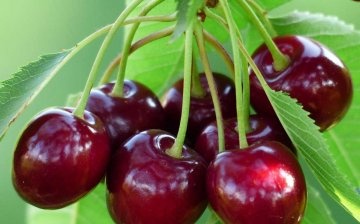
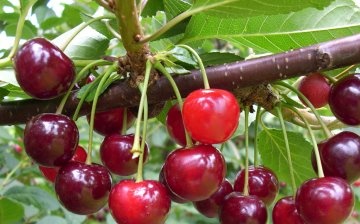
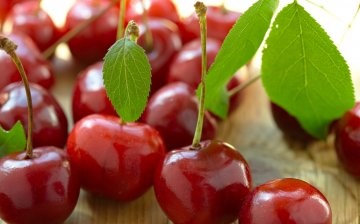
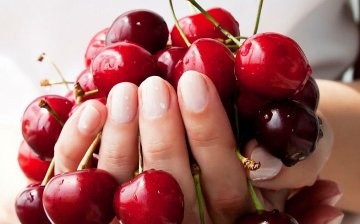
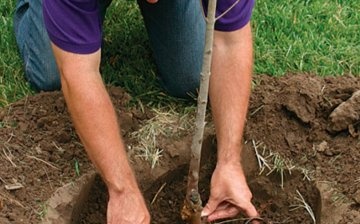
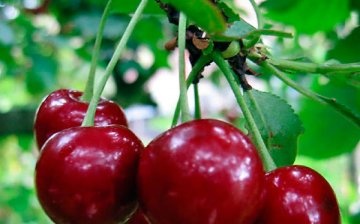
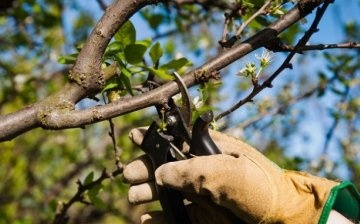
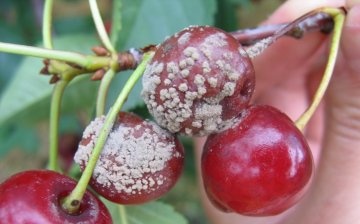








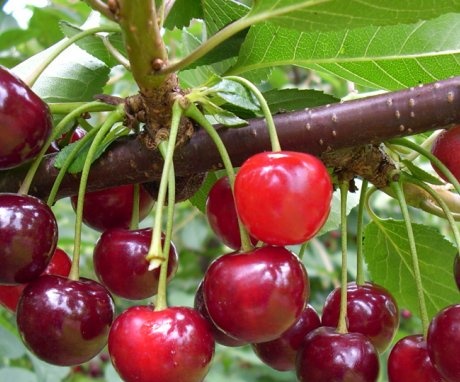
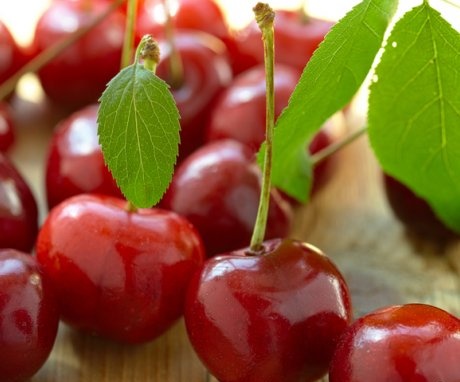

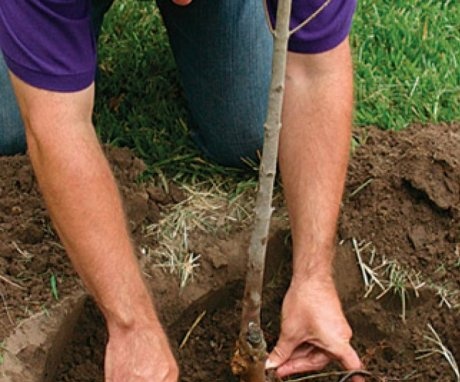


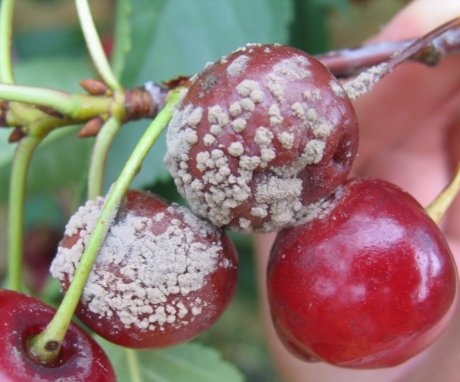
Why can cherry fruits be very small with a large stone inside and with very thin and not juicy pulp? We have one very young cherry and almost regularly gives such a harvest.